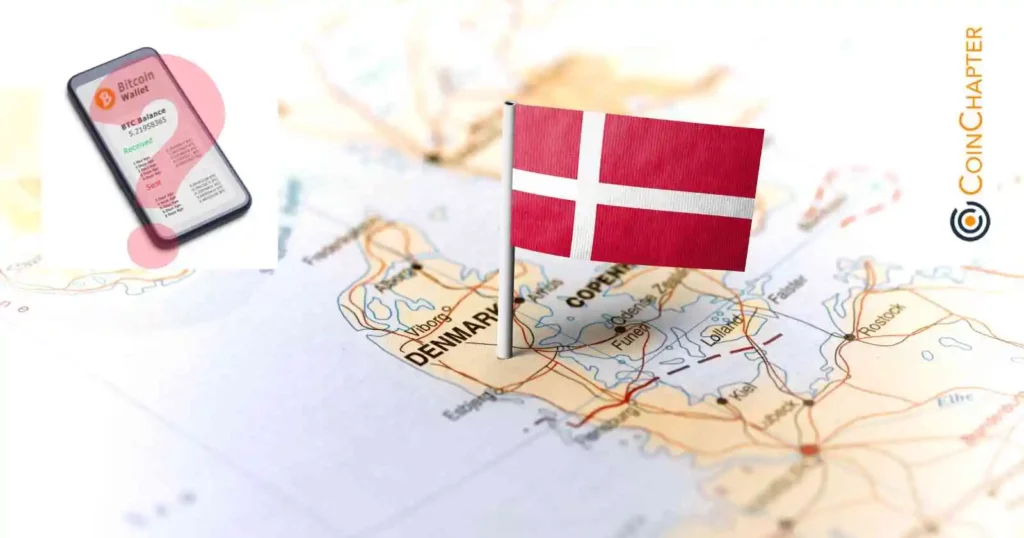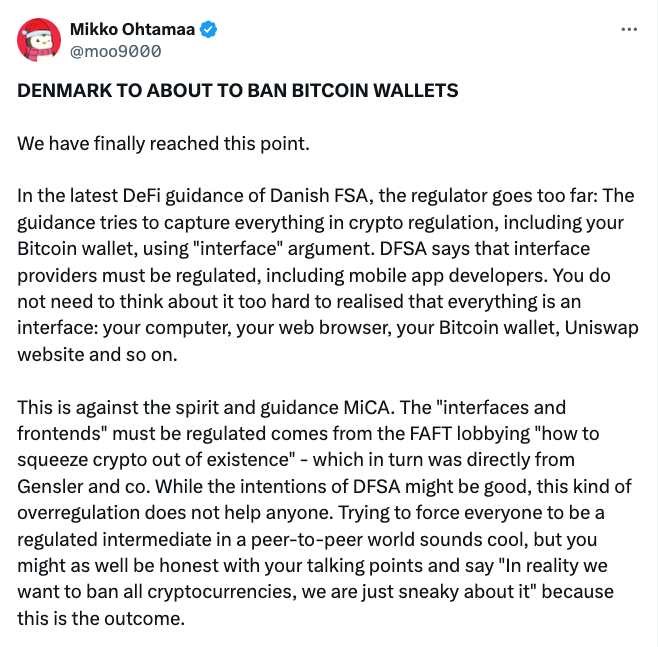Self-Custodial Wallets Not Being Banned, Says Denmark
0
0

YEREVAN (CoinChapter.com) — Contrary to recent social media reports claiming that Denmark was about to ban Bitcoin wallets, Danish regulators have not proposed banning self-custodial cryptocurrency wallets. The Danish Financial Supervisory Authority (DFSA) clarified that there are no plans to prohibit these wallets.

Tobias Thygesen, DFSA’s director for fintech, payments services, and governance, stated,
“We are aware of some misinformation circulating on social media suggesting that the DFSA intends to ban hardware wallets and other non-custodial wallets. This is incorrect. The DFSA has not proposed any such ban.”
Self-Custodial Wallets and MiCA Exemption
The confusion seems to stem from the Markets in Crypto-Assets (MiCA) Regulation, which came into force on June 30. According to the DFSA, self-custodial wallets are exempt from MiCA regulation because they do not involve intermediaries. MiCA targets activities like crypto custody and trading, which require an intermediary.

Thygesen emphasized that the only regulated activity related to wallets involves the custody and administration of crypto-assets on behalf of clients. Since hardware wallets do not give custody of private keys to the wallet provider, they are not regulated by MiCA.
Social Media Post Sparks False Rumors About Bitcoin Wallet Ban
The rumors appear to have started with a social media post by Mikko Ohtamaa, co-founder of the algorithmic investment protocol Trading Strategy. Ohtamaa incorrectly interpreted the DFSA’s assessment, believing that by exempting self-custodial wallets, the DFSA wanted to stop offering such wallets in Denmark. This was not the case.

Understanding Self-Custodial Wallets
Self-custodial wallets allow users to store cryptocurrencies like Bitcoin without any intermediary. This means users have full control over their crypto assets and are solely responsible for their security. Unlike custodial wallets, self-custodial wallets do not require Know Your Customer (KYC) procedures. The private key is the sole method of verifying ownership.
Self-custodial wallets come in various forms, including software-based wallets like MetaMask and hardware wallets like Ledger or Trezor. These wallets provide users with the ability to be their own bank, but the responsibility for maintaining the wallet’s security falls entirely on the owner.
DFSA Clarifies Regulatory Scope for Software Wallets
Despite being exempt from MiCA, some software wallets offer integrated interfaces to decentralized services. According to Thygesen, these integrations could be regulated by MiCA if they are not fully decentralized. For example, a software wallet that executes orders on a decentralized exchange on behalf of clients could require authorization if a legal entity controls the service.
Thygesen noted that these cases are complex and require case-by-case assessment.
“These cases are often very complex and would entail a case-by-case assessment. The intention […] is to ensure awareness of potential regulatory requirements, and underline that the DFSA is open for dialogue for understanding whether specific offers in Denmark are in scope of MICA or not.”
The post Self-Custodial Wallets Not Being Banned, Says Denmark appeared first on CoinChapter.
0
0







